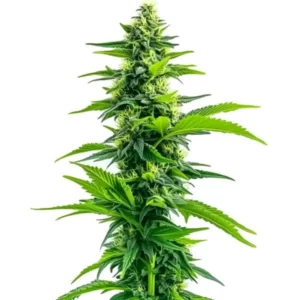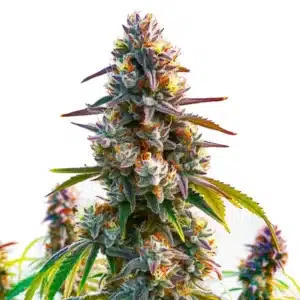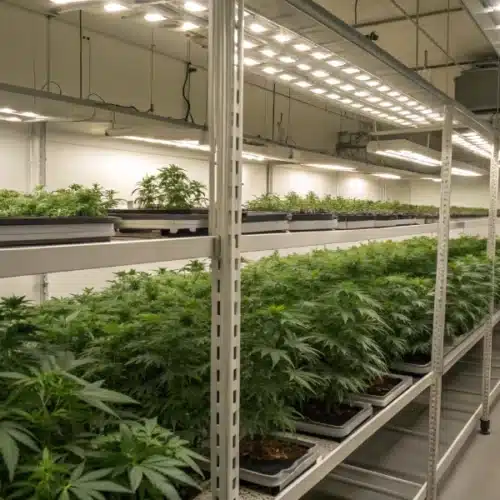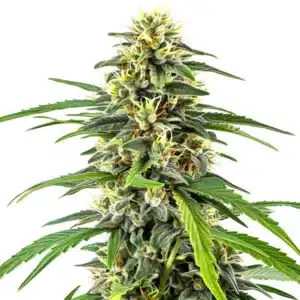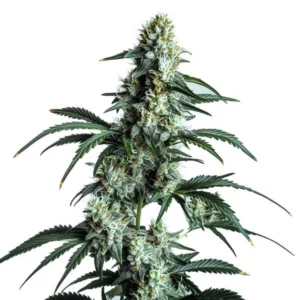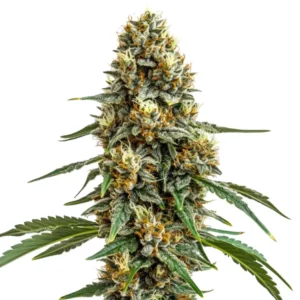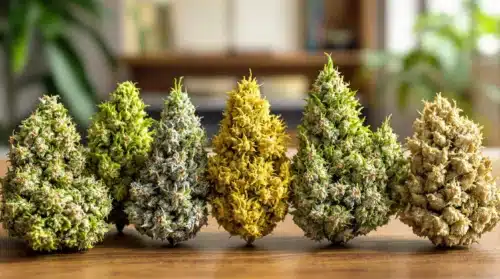Cannabis enthusiasts often favor sativa strains for their uplifting effects and energizing properties. As we move into 2025, growers and consumers alike are looking for the best options to suit their needs. Below, we’ll examine some standout sativa strains, their characteristics, and why they deserve your attention.
What Makes Sativa Strains Unique?
Sativas are known for their taller plants, narrow leaves, and longer flowering times compared to their indica counterparts. They thrive in warm climates and are often praised for effects that boost creativity, focus, and energy. These strains are perfect for daytime use, allowing consumers to stay productive and inspired.
Sativas also provide a unique sensory experience. Their flavor profiles, often citrusy or fruity, reflect their vibrant terpene content. Additionally, the stimulating effects of sativas make them ideal for those seeking to elevate their mood without feeling sedated, a common trait of indica strains.
Their popularity extends beyond recreational use. Many individuals turn to sativas for therapeutic benefits, such as combating fatigue or enhancing focus. This versatility has solidified sativas as a staple choice in the cannabis world, appealing to both seasoned users and novices.
Characteristics of High-Quality Sativas
- Energetic Effects: Known to elevate mood and energy levels.
- Flavor Profiles: Often citrusy, fruity, or earthy with spicy undertones.
- Growth Traits: Tall stature, thin leaves, and extended flowering periods.
- Versatility: Ideal for outdoor and indoor growing setups, given sufficient height space.
High-quality sativas stand out not only for their effects but also for their cultivation traits. These strains thrive in controlled environments where growers can maximize their terpene production and yield. When grown with care, sativas produce a rich array of cannabinoids and terpenes that amplify their effects.
Flavor is another hallmark of premium sativas. From the zesty notes of Super Lemon Haze to the tropical undertones of Green Crack, the sensory experience these strains provide is unmatched. Their versatility, paired with a robust flavor and effect profile, ensures their continued appeal in the cannabis market.
Promos & Deals
Top Sativa Strains for 2025
1. Super Lemon Haze
Features and Effects
This award-winning strain combines the zest of lemon with subtle sweetness, creating a flavor profile that’s both refreshing and memorable. Super Lemon Haze is ideal for those seeking a balance between euphoria and mental clarity.
Users often report a surge of energy shortly after consumption, making it perfect for creative tasks or physical activities. Its uplifting nature has also been praised for alleviating stress and promoting a positive outlook.

Growth Information
- Height: Medium to tall.
- Flowering Time: 9-10 weeks.
- Yields: High, up to 600 gr/m2 indoors.
Super Lemon Haze is a grower’s favorite due to its manageable height and abundant yields. Indoor cultivators appreciate its adaptability, while outdoor growers value its resistance to pests and mold. Proper nutrient management ensures this strain reaches its full potential.
2. Green Crack
Features and Effects
Green Crack is renowned for its invigorating effects, making it a go-to for creative projects or morning routines. It offers a tropical flavor profile with notes of mango and citrus.
This strain is particularly popular among artists and professionals who rely on cannabis to maintain focus. Its cerebral effects provide a burst of motivation without causing overwhelming psychoactive effects, making it a reliable choice for daytime use.
Growth Information
- Height: Compact but bushy.
- Flowering Time: 7-9 weeks.
- Yields: Medium to high, depending on conditions.
Green Crack’s bushy structure makes it suitable for both indoor and outdoor setups. Growers often use training techniques such as low-stress training (LST) to optimize yields and ensure even light penetration.
3. Jack Herer
Features and Effects
Named after the legendary cannabis activist, Jack Herer delivers a potent mix of relaxation and cerebral stimulation. Its spicy, pine-like aroma complements its effects perfectly.
This strain is celebrated for its balanced high, which keeps users mentally alert while promoting a sense of calm. It’s an excellent choice for tackling complex tasks or enjoying social gatherings without feeling fatigued.
Growth Information
- Height: Tall.
- Flowering Time: 8-10 weeks.
- Yields: Consistent and robust, up to 500 gr/m2.
Growers appreciate Jack Herer’s resilience and high yields. Its tall structure requires ample vertical space, making it a better fit for outdoor cultivation or large indoor grow rooms.
4. Durban Poison
Features and Effects
Durban Poison hails from South Africa and is known for its clear-headed effects. This strain is perfect for those who want to stay sharp and focused while enjoying an uplifting experience.
The earthy, sweet flavor of Durban Poison is as distinctive as its effects. It’s a favorite among those seeking a natural energy boost or relief from mild anxiety, without sacrificing mental clarity.

Growth Information
- Height: Very tall; best suited for outdoor grows.
- Flowering Time: 8-9 weeks.
- Yields: Generous, especially outdoors.
Durban Poison thrives in sunny climates. It’s resistant to environmental stressors, making it ideal for outdoor growers. Regular pruning helps manage its height and ensures robust bud development.
5. Strawberry Cough
Features and Effects
Strawberry Cough stands out for its delightful strawberry flavor and smooth smoke. The effects are calming yet motivating, making it great for both beginners and experienced users.
Its subtle high promotes relaxation without causing lethargy. Many users enjoy it as a midday pick-me-up, especially during moments of high stress or creative blocks.
Growth Information
- Height: Medium.
- Flowering Time: 9 weeks.
- Yields: Moderate, but the flavor compensates for quantity.
Strawberry Cough’s manageable size and robust flavor profile make it a favorite among indoor growers. Its unique aroma develops best with proper curing techniques.
How to Choose the Right Sativa
When selecting a sativa strain, consider the following:
- Desired Effects: Choose based on whether you need energy, creativity, or focus.
- Growing Environment: Ensure you have adequate vertical space for tall plants.
- Climate: Sativas thrive in warm, sunny conditions, so outdoor growers in cooler regions may need a greenhouse setup.
- Experience Level: Some sativas, like Durban Poison, are more forgiving for beginners.
Choosing the right sativa involves aligning your personal goals with the strain’s specific characteristics. Understanding your climate and grow setup can ensure a more rewarding cultivation experience.
Growers should also factor in the strain’s flowering time and yield expectations. Planning accordingly can maximize your harvest and reduce unnecessary challenges.
Best Growing Tips for Sativa Strains
- Height Management: Use topping or training methods to control plant height.
- Lighting: Provide ample light to encourage robust growth.
- Nutrients: Focus on nitrogen during the vegetative stage and phosphorus in flowering.
- Temperature and Humidity: Maintain a warm environment with moderate humidity levels.
Proper care during the vegetative and flowering phases can significantly improve your yield. Techniques such as pruning and nutrient cycling are vital for achieving optimal results.
Additionally, investing in quality grow lights and ventilation ensures that your plants develop healthy, resin-rich buds. Monitoring environmental factors like temperature and humidity is key to avoiding common issues like mold or pests.
Popular Uses of Sativa Strains
Sativas are celebrated not only for recreational use but also for therapeutic purposes. They may help with:

- Alleviating depression and anxiety.
- Boosting energy for physical activities.
- Enhancing focus for creative endeavors.
Many medical cannabis users turn to sativas for their uplifting effects. Whether managing chronic fatigue or finding relief from mental health challenges, sativas provide a holistic alternative to traditional therapies.
Their energizing nature also makes them popular among athletes and active individuals. Used responsibly, sativas can enhance endurance and focus, contributing to a more balanced lifestyle.
FAQs About Sativa Strains
What is the difference between sativa and indica?
Sativa strains are typically uplifting and energizing, while indica strains are known for their relaxing, sedative effects. Additionally, sativas tend to grow taller with thinner leaves compared to indica plants.
Which sativa strain is best for beginners?
Strawberry Cough is a great choice for beginners due to its mild effects and ease of cultivation. Its forgiving growth traits make it suitable for indoor growers with limited experience.
Can sativas be grown indoors?
Yes, but their tall height requires proper management techniques such as topping or using a ScrOG (Screen of Green) method. Growers should also ensure adequate light and ventilation for optimal results.
Are sativas good for medical use?
Sativas can be beneficial for managing conditions like depression, fatigue, and ADHD, thanks to their uplifting effects. Patients often report improved focus and mood when using sativa strains as part of their treatment plan.
What is the average flowering time for sativa strains?
Most sativas flower within 8-10 weeks, although some may take longer depending on the specific strain. Proper planning and monitoring ensure that flowering is completed successfully.

